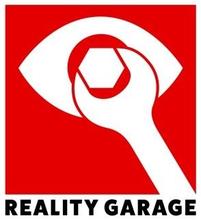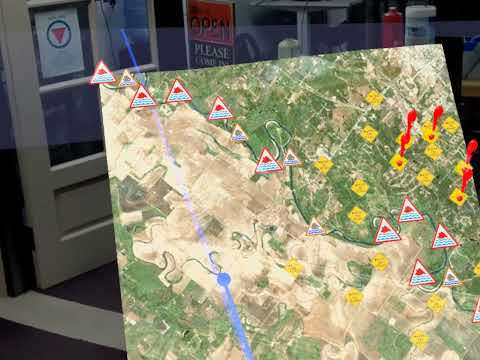Team Reality Garage
Most Creative Method of Interaction with AR prototype - Hand Gesture: $5,000
Total value of prizes received through the CHARIoT Challenge: $32,000
About the Team
Team Members: Robert Ottinger, Brenda Lee, Adam Oosthuizen, Felipe Cabrera, Christopher Tarantino (public safety partner); Matt Green (public safety partner)
The Reality Garage engineering team has considerable breadth and depth of experience in software, system, networking, network management, and most importantly, Virtual and Augmented Reality and Mobile Applications. In operation since 2016, Reality Garage has created over 40 VR/AR productions and mobile applications (using the Unity Game Engine) for customers. They seek to develop strong relationships with their customers, proving to be agile, collaborative, creative while delivering high quality solutions for a wide variety of customer needs. For the CHARIoT Challenge, they partnered with Epicenter Innovation as their public safety partner.
Epicenter Innovation works with public and private sector entities to enable first responders and emergency managers to integrate 21st-century methodologies and technologies into their operations. Epicenter’s Deployment Support Unit dispatches a team of first responders, emergency managers, and technologists to help manage emergencies and disasters around the country, including COVID-19. Their cadre of subject matter experts and responders are uniquely suited to testing these concepts in the field and iterating for future functionality.

Robert Ottinger
After years of c and c++ development, system design, and engineering leadership at companies such as Qualcomm and Ericsson, Robert launched Reality Garage in 2016 with business partner Brenda Lee. Robert has leveraged his software and design skills to create an interactive VR film platform that supports 3D assets, animations, and model driven application logic, on top of new user Interface paradigms available in AR and VR. Robert holds patents in telecommunications, is highly proficient in software and engineering development, and is proficient with Unity, Premiere, Blender, Photoshop, and Illustrator to name a few related development applications.
Brenda Lee
After Brenda completed her undergraduate degree in Mathematics at University of California San Diego, she spent several years in the materials analysis industry, then moved on to complete a Masters degree in psychotherapy. Her vision to leverage the immersive powers of VR and AR for areas such as mental health, and social impact was the impetus behind the formation Reality Garage. Brenda’s unique blend of logic and human insight have been crucial to the success of Reality Garage User Interface development.
Adam Oosthuizen
Adam hales from South Africa. He started his own VR company while completing his degree in film and media journalism and philosophy. A creative talent that is proficient in Unity and a host of media production applications, he brings a level of creativity and thoughtfulness that gives his work a powerful sense of purpose and quality.
Christopher Tarantino
Christopher Tarantino; Founder/CEO and 15-year veteran first responder (fire service, emergency medicine, hazardous materials technician, and rescue specialist), emergency manager (Federal, state, local, nonprofit, and private sector), thought leader (SME for Department of Defense, National Disaster Preparedness Training Center / FEMA, and other organizations), and Past Chair & Speaker (International Association Of Emergency Managers – Emerging Technology Caucus).
Matt Green
After several years of working in EMS and emergency management, Matt currently serves as the Director of Engagement for Epicenter Innovation, working to foster innovation throughout emergency management and overseeing a deployment support unit. Matt is also an adjunct professor for the Metropolitan College of New York's Emergency & Disaster Management program.
The Solution
Their augmented reality user interface seeks to enable key players at an Incident Command Post (ICP) to assess data, make decisions and dispatch actions to responders. Their device seeks to make effective use of mass amounts of data so that responders can make use of all available information and perform their primary tasks effectively and safely.
Key Features
-
First Responder UI: Utilized Hand tracking and gestures with no controllers. Control an Interactive 3D Map with Wrist watch and docked modes, pan, and zoom with finger gestures


